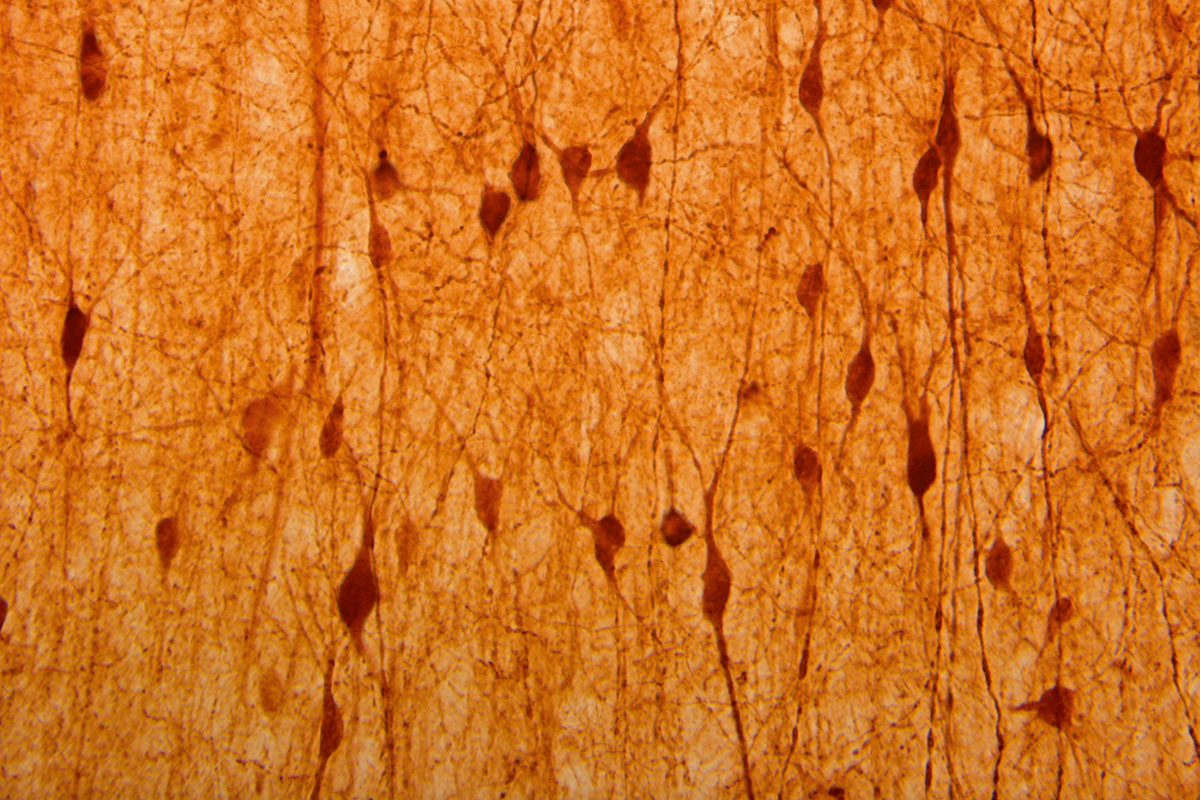
It is easy to understand that a number of neurons below the normal level involves a loss of cognitive abilities. This occurs in babies who are born with microcephaly (with head size well below what is considered normal), which tends to be accompanied by some type of intellectual disability. However, it is not so intuitive that an excess of neurons can generate problems; yet it does, and they can be very serious. For example, people with autism spectrum disorders (including Rett syndrome) tend to have an unusually high number of neurons, and syndromes causing megalencephaly (that is, bigger than normal brain size) often involve neurological deficits. For a correct functioning of the brain, it is essential that the number of neurons is the appropriate one: neither more nor less.
The development processes by which the number of neurons conforms to the functional «needs» of each individual are complex and we still have not figured them out completely. We know fairly well how this adjustment occurs in some neurons of the peripheral nervous system. Basically, many more neurons than necessary are produced, which compete against each other to establish contact with the target organ from which they obtain «nutrients» that are essential for their survival (neurotrophic theory). These nutrients include the nerve growth factor, a protein whose discovery by Dr. Rita Levi-Montalcini and Dr. Stanley Cohen was worth the Nobel Prize in Physiology or Medicine in 1986. The regions that require more innervation produce a higher amount of this protein and thus a quantitative adjustment between the number of neurons and the size of the tissue that these innervate. Neurons that fail to establish contact or do not get enough nerve growth factor die. More than 50% of the neurons of the peripheral nervous system die in this «struggle for survival».
«For a correct functioning of the brain, it is essential that the number of neurons is the appropriate one: neither more nor less»
In the developing brain more neurons than are needed are produced as well, and many of them die before adulthood, but this reduction in the number of neurons does not seem to depend on neurotrophic factors. The suicide of a large number of inhibitory interneurons (40% approximately) occurs in the cerebral cortex of mouses during a critical period of postnatal development (from seven to eight days after birth). It has been proved through various experiments that the survival or not of these inhibitory neurons depends on their level of excitement, which is given by the input they receive from excitatory cortical neurons. This stimulation acts as a signal that prevents the neuron from committing suicide. In this critical period those neurons which survive are the ones that have joined the most active cortical circuits correctly. If this process fails and more interneurons than necessary survive, an imbalance between excitation and cortical inhibition is produced, which can generate functional deficits such as those observed in some types of autism.
Although it may seem wasteful, producing neurons in excess is a very good strategy to ensure the correct (sufficient) innervation of target organs in the peripheral nervous system, and to adjust the optimum ratio of inhibition/excitation in the brain cortex, which provides the plasticity needed to adapt the number of neurons (and brain size) to the minimum necessary for the proper functioning of the body.





